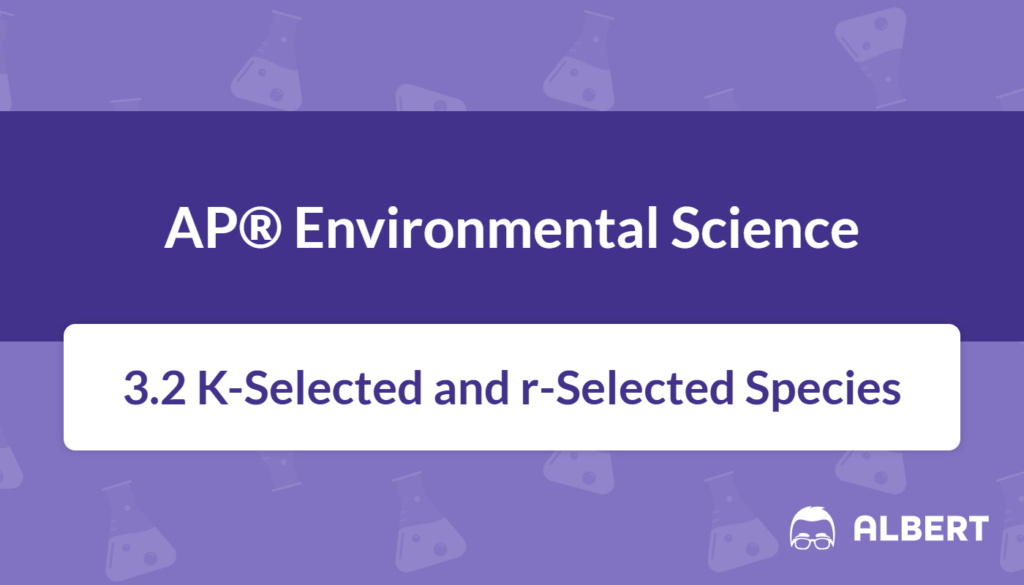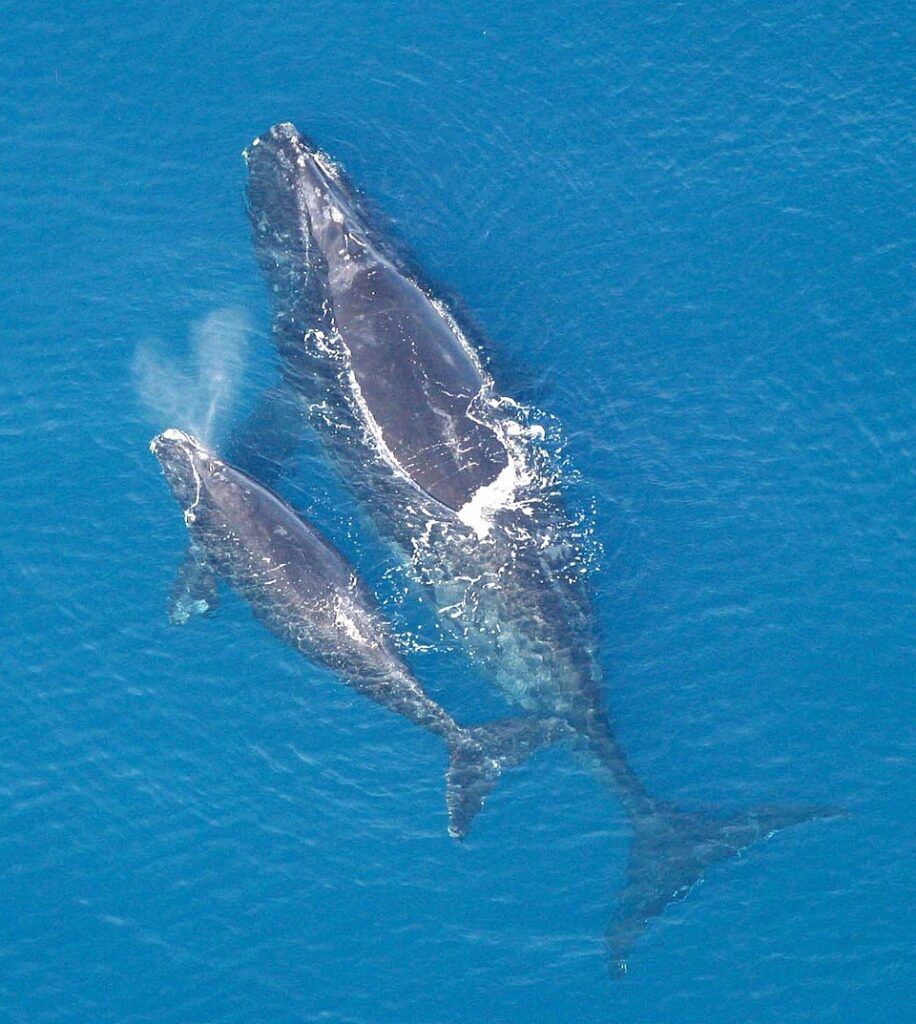What We Review
Introduction
Ecologists often classify species based on traits related to reproduction and survival. One of the most common frameworks is the K-selected versus r-selected classification. K-selected species typically invest heavily in a small number of offspring, whereas r-selected species often produce large numbers of offspring with minimal parental care. Consequently, each strategy has advantages and disadvantages in different ecological contexts.
Because these strategies affect population dynamics, they also tie into broader AP® Environmental Science topics. For instance, shifts in population growth can influence how resources are allocated or how pollution impacts certain habitats. Moreover, policies related to renewable energy projects sometimes consider the balance of species within an area to protect vulnerable, K-selected populations. The following sections explore each strategy in detail, giving an example and highlighting key differences.
What Are K-Selected Species?
K-selected species are organisms that thrive in stable environments and invest considerable energy in each offspring. They usually have fewer offspring per reproductive event, yet each offspring has a higher chance of surviving to adulthood. These species mature slowly, spend time developing, and often compete intensely for limited resources.
Characteristics of K-Selected Species
- Large body size: K-selected species are frequently bigger. This size can offer protection from some predators.
- Low number of offspring: They produce only a few offspring in each reproductive cycle.
- Significant parental care: These species invest resources—like food, shelter, and protection—to ensure offspring survival.
- Long lifespan: Because they develop slowly, K-selected species tend to have a longer life expectancy.
- Reproduce multiple times: They commonly engage in repeated reproductive events, though each event includes few offspring.
K-selected species are influenced by environments that tend not to fluctuate drastically. Competition among individuals remains high because each organism invests considerable resources in survival.
Example: Elephants
Elephants demonstrate K-selected reproductive strategies:
- Reproductive period: Female elephants reach sexual maturity around 10 to 12 years old. This delayed maturity is typical of K-selected organisms.
- Few offspring: A female elephant typically has a single calf every few years.
- Intensive parental care: Elephants nurse their young and teach them essential survival skills, such as finding water or recognizing predators.
- Long lifespan: Elephants may live for several decades, enabling multiple reproductive cycles throughout life.
By taking significant time and energy to raise each calf, elephants increase the likelihood that each one reaches adulthood. However, the number of offspring remains limited, which contrasts with the r-selected approach explored below.
What Are R-Selected Species?
In contrast to K-selected species, r-selected species tend to reproduce quickly, generate many offspring, and invest minimal resources in parental care. These species often thrive in environments that change unpredictably. Because of their high reproductive rate, many r-selected species can adapt to new habitats rapidly. This adaptability is also a common trait among invasive species, which can disrupt local ecosystems.
Characteristics of R-Selected Species
- Small body size: Most r-selected species are small, allowing for quicker growth and reproduction.
- Large number of offspring: They may produce dozens or hundreds of offspring during each event.
- Minimal parental care: Offspring often fend for themselves with little or no assistance from parents.
- Short lifespan: Since they grow and reproduce quickly, these species do not usually live as long.
- Early maturity: Many r-selected organisms can reproduce at a young age, thus increasing their potential for exponential population growth.
Because they invest less in each offspring, r-selected species rely on probability. Even if many offspring do not survive, the sheer volume helps maintain the population.
Example: Rabbits
Rabbits often illustrate r-selected strategies:
- Early maturity: Rabbits can begin reproducing around three months of age or sooner, which is a hallmark of r-selected species.
- High offspring count: A female rabbit can produce a litter of several kits multiple times per year.
- Limited parental care: Rabbit mothers nurse for a short period but then quickly encourage independence.
- Short lifespans: Wild rabbits generally live only a few years, yet they can have multiple litters in that span.
Because rabbits reproduce so quickly, populations can increase at a rapid rate. However, they are also more vulnerable to predators, diseases, and other factors that can limit survival in the wild.
The Differences Between K-Selected and R-Selected Species
Although there are species that do not fit perfectly into either group, K-selected and r-selected strategies describe distinct ends of a spectrum. The table below summarizes a few notable differences:
- Size and number of offspring
- Lifespan and maturity
- Parental care
- Resource competition
| Trait | K-Selected Species | r-Selected Species |
| Body Size | Large | Small |
| Number of Offspring | Low | High |
| Parental Care | Significant | Minimal |
| Lifespan | Long | Short |
| Maturity Rate | Slow | Fast |
| Competition | High | Low |
Moreover, K-selected species thrive in stable, predictable environments, whereas r-selected species excel in rapidly changing or disturbed habitats.
Biotic Potential and Its Impact
Biotic potential is the maximum reproductive rate of a population under ideal conditions. It indicates how fast a population could grow if resources were unlimited and no limiting factors (such as diseases or predators) existed. Although both K-selected and r-selected organisms have the ability to grow their populations, they do so in different ways.
- K-selected species: Their biotic potential tends to be lower because they produce fewer offspring. However, the survival rate for these offspring is often higher if resources remain plentiful.
- r-selected species: Their biotic potential tends to be higher because they produce many offspring quickly. Yet each individual offspring faces numerous survival challenges.
A simple population growth model often used in AP® Environmental Science classes is the exponential model:
N(t) = N_0 e^{rt}Here, N(t) represents the population size at time t, N_0 is the initial population size, and r is the intrinsic growth rate. r-selected species often show rapid growth (high r) when resources abound. By contrast, K-selected species typically have a lower r and approach carrying capacity more gradually.
Invasive Species and Their Impact on K- and R-Selected Species
Invasive species are non-native organisms that enter new habitats and outcompete local species. Often, these invaders display r-selected traits. Because they reproduce quickly, they can spread through an ecosystem before local species adapt or recover.
K-selected species are more severely affected by invasive species, for two main reasons:
- Competition for resources: Many invasive species—such as certain plants or animals—take over habitats and reduce the resources available to natives. K-selected populations need stable environments, so these changes can stunt their population growth.
- Slow reproductive rate: K-selected organisms reproduce less frequently, which makes recovery from sudden declines challenging.
For instance, certain invasive bird species can outcompete native birds for nesting sites. These native birds, often K-selected, invest heavily in a small number of eggs each year. Consequently, their numbers may drop significantly in the face of resource competition.
Meanwhile, r-selected species (including some invasive species) can tolerate such changes better. Because r-selected species thrive on disturbance and reproduce rapidly, they can react to altered circumstances more quickly. This adaptability makes them more resilient when new competition arrives.
Conclusion
K-selected and r-selected strategies illustrate how various organisms balance reproduction and survival. Furthermore, understanding these strategies helps students interpret population growth data and recognize how biotic potential shapes ecological communities. For example, conservation efforts often focus on protecting K-selected species like elephants, rhinos, or whales due to their slow reproductive rates and vulnerable populations.
In AP® Environmental Science, these concepts connect to multiple topics, such as how energy is transferred through food webs, how carbon cycles in ecosystems, and how population models guide resource management. Additionally, the interactions between native and invasive species are critical considerations for environmental policies, especially if initiatives related to renewable energy construction or habitat restoration risk disturbing local biodiversity.
By recognizing these reproductive patterns, students gain insights into how populations respond to external pressures, including habitat loss, climate change, and overharvesting. Ultimately, this knowledge can inform strategies aimed at protecting species at risk and sustaining ecosystem balance.
Key Vocabulary
- K-selected species: Species that produce fewer offspring, invest significant resources in raising them, and tend to thrive in stable environments.
- r-selected species: Species that produce many offspring, invest minimal resources in each, and tend to thrive in unstable or unpredictable environments.
- Biotic potential: The maximum reproductive capacity of an organism under ideal conditions.
- Invasive species: Non-native species that spread rapidly in a new environment, often outcompeting local species.
- Carrying capacity (K): The maximum population an environment can support without ecological damage or resource depletion.
Sharpen Your Skills for AP® Environmental Science
Are you preparing for the AP® Environmental Science test? We’ve got you covered! Try our review articles designed to help you confidently tackle real-world AP® Environmental Science problems. You’ll find everything you need to succeed, from quick tips to detailed strategies. Start exploring now!
- AP® Environmental Science: 2.5 Review
- AP® Environmental Science: 2.6 Review
- AP® Environmental Science: 2.7 Review
- AP® Environmental Science: 3.1 Review
Need help preparing for your AP® Environmental Science exam?
Albert has hundreds of AP® Environmental Science practice questions, free response, and full-length practice tests to try out.









